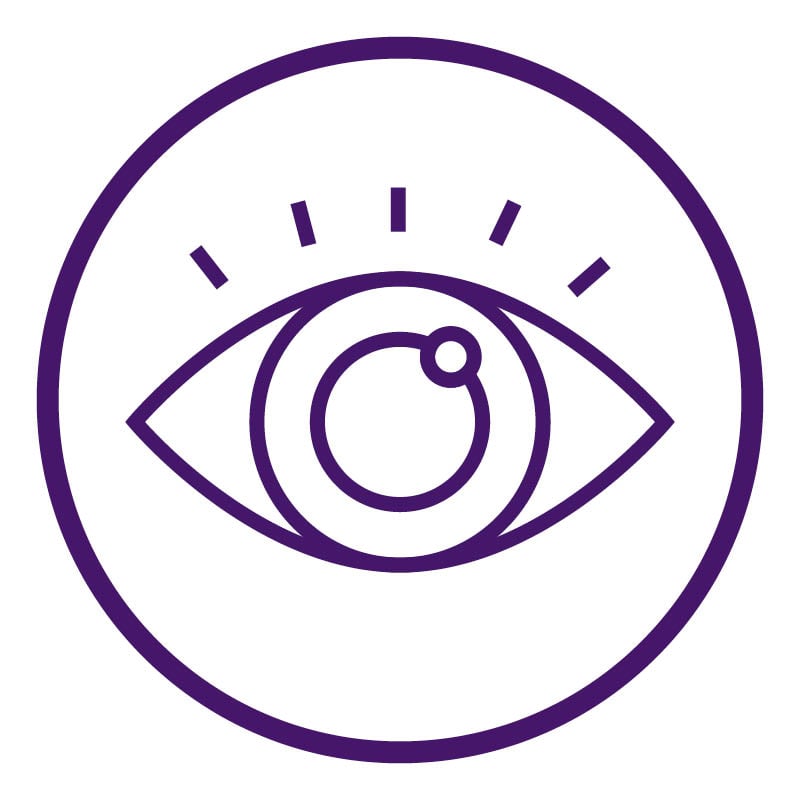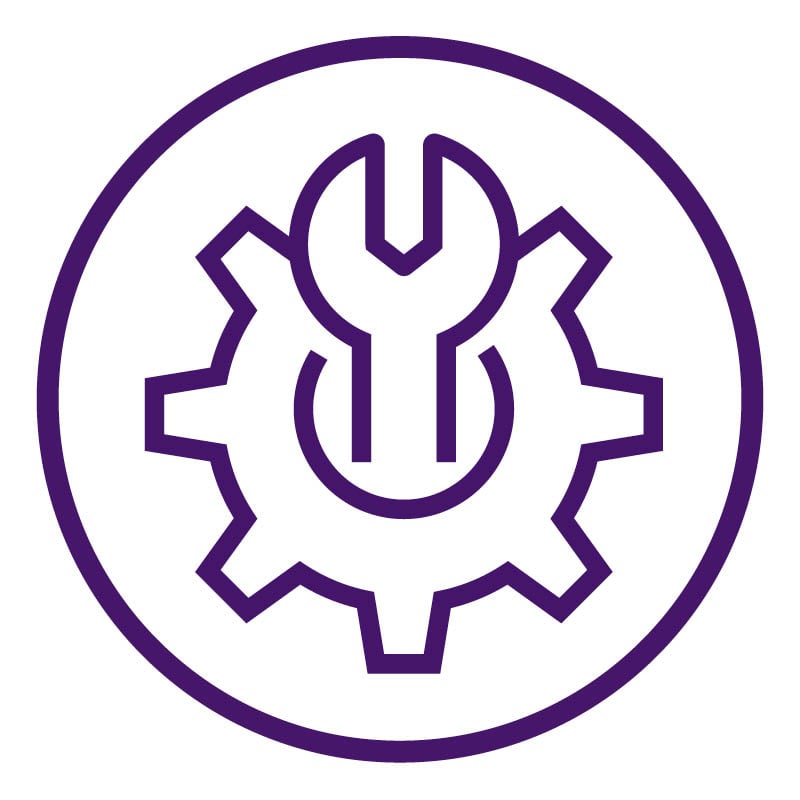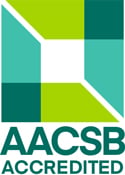College of Business Strategic Plan
2023 - 2027
 Vision
Vision
The clear busines school choice for real-world learning experiences.
 Mission
Mission
We are a regional AACSB accredited College of Business committed to learner-centered education, applied research, and high-impact partnerships.
-
We engage in collaborative research to advance knowledge of business practice, student learning, and business theory.
-
We are committed to equitable undergraduate business education with expanding opportunities in graduate education and continuing professional education.
- We create relational partnerships to benefit learners, business, and society.
 Core Values
Core Values
- Learner-Centered
- Innovative and Professional
- Diversity, Equity, Inclusion
- Collaboration
Strategic Priorities

Programs
High-quality, real-world, and equitable business programs for the educational and career success of all learners.
View Goals View lessGoal 1: Skill and Competency Development Through High Quality, Real-World Experiences
Evaluate, develop, implement, and promote professional skill development and competencies through real-world experiences for all business programs.
1.1: Develop and implement specific learning opportunities with emphasis on professional skill competencies for every business program.
- Promote existing certificates and explore new certificate opportunities by evaluating curriculum in partnership with industry.
- Create, implement, and assess student learning outcomes for the digital, critical thinking, and communication skills for all COB learners.
- Expand opportunities for students to graduate with high-demand skills and competencies through certificates, special topic courses, and professional offerings.
1.2: Create and implement high impact, real-world experiences into the business curriculum.
- Incorporate and promote real-world and regional assignments, clients, and case-based studies for every business program.
- Incorporate digital technologies and other real-world tools into 80% of the curriculum.
- Encourage and increase affordable study away and abroad tours for students.
- Create opportunities and financial support for students to participate in case competitions, professional clubs, and student organizations within the COB.
- Increase student awareness of opportunities outside of the classroom with promotions including monthly information sessions and group advising.
1.3: Increase emphasis on ethics, social responsibilities, and diversity in all business programs.
- Review program learning outcomes from a lens of increasing student exposure and competence in understanding the role of business in addressing key societal issues as included in the United Nations Sustainable Development Goals.
- Increase student ethical awareness, ethical reflection ability, and ability to apply ethical principles in decision-making.
- Demonstrate knowledge and understanding of the impact diversity, equity, inclusion, and justice have on the future of business.
Goal 2. Diversify Community of Learners
Increase and promote access for a wider diversity of adult (working) learners in business programs to reflect demographic shifts and expectations across a lifetime.
2.1: Explore the potential of for-credit Continuing Education offered through the College of Business.
- Conduct a competitive analysis of for-credit continuing education in other business schools.
- Explore current needs of for-credit continuing education opportunities with industry partners.
- Leverage COB certificates as continuing education offerings to adult learning audiences both as in-person and online deliveries.
Goal 3. Create Community of Care
Continue to create and promote an inclusive culture and MavBiz community of engagement, care, and well-being that eliminate equity gaps in teaching, learning, and completion.
- Engage all faculty and staff in diversity, equity, and inclusion professional development each year using annual performance programs to report individual outcomes.
- Increase faculty and staff use of student success strategies (e.g., early alerts, MavPass, Grad Planner, D2L, etc.) to eliminate opportunity gaps including annual reviewing course DFW rates and creating strategies individually and with colleagues to eliminate opportunity gaps.
- Establish mentoring programs between alumni and COB students.
- Monitor, disseminate, and increase retention and graduation rates for all business programs annually, with specific attention to reducing the equity gap.
- Measure and report learner satisfaction using a variety of tools with the aim of improving engagement and satisfaction during the 3 years.

Resources
Diversified resources to expand engaging, innovative, and impactful learning.
View Goals View LessGoal 1: Diversified Faculty & Staff
Increase the diversity of faculty and staff in the COB through hiring, professional development, and retention.
- Increase hiring of racially and ethnically diverse faculty by expanding recruitment efforts to applied doctoral programs, faculty of color association chapters, and other networks.
- Increase hiring of racially and ethnically diverse staff (including student team members), especially through increasing pools of diverse students and alumni.
- Collaborate with University offices (e.g., CETL and University DEI) to curate and incentivize DEI and closing the equity gap professional development for all COB faculty and staff.
- Expand options and funding of DEI professional development for all faculty and staff, including summer opportunities and grants.
- Expand mentoring and orientation for new faculty and staff that include opportunities for social gatherings.
Goal 2: Diversified Financial Resources
Diversify funding by increasing external revenue sources including private, corporate, grant, and non-general fund sources.
- Pursue private and corporate gifts that support the COB and department strategic priorities.
- Increase support and recognition of grants as important scholarly endeavors and avenues of innovation and societal impact.
- Continue to diversify program portfolio (certificates, online education, and continuing education) for new financial resources.
Goal 3: Diversified Technology and Space Resources
Prioritize and implement technology-rich resources and spaces (both physical and virtual) for the cutting-edge educational outcomes of each business discipline and program.
3.1: Create technology-based resources to support the educational needs of a wide range of college programs.
- Analyze how delivery modes align with program outcomes and make changes/improvements based on student feedback.
- Partner and seek financial support from industry to embed technology-rich resources in the curriculum and provide digital resources that students can access to increase competence.
- Introduce data analytics into courses valued by industry.
3.2: Create a space for students to participate in innovative thinking and idea sharing.
- Create innovative, collaborative learning spaces.
- Encourage student/faculty collaboration on data-driven and entrepreneurial projects.
- Seek and optimize space in Morris Hall to use for collaboration areas or skill-development lab(s).

Partnerships
Leverage partnerships to transform educational access, thought leadership, and societal impact in the region.
View Goals View LessGoal 1: Access to Quality Lifelong Learning
Provide and promote innovative programs and thought leadership for business education for all lifelong adult learners (United Nations Sustainability Goal #4: Quality Education and Goal #10 Reduce Inequalities).
1.1: Broaden educational access and bring more learners into business
- Target business opportunities, degrees, and certificates to adult learners and high school students.
- Identify and establish mutually beneficial relationships with employers and 2-year programs.
- Work toward more pathways and greater transferability of courses/credits between Minnesota State University and regional programs.
Goal 2: Solutions for Regional and Global Challenges
Create mutually beneficial partnerships with regional—especially southern Minnesota—private/business, public, and nonprofit sectors to provide solutions for global challenges.
2.1: Increase engagement and strengthen relationships with employers and alumni
- Partner with business on action research that generates solutions for real-world problems.
- Increase touch points between employers and students via on-campus, community, and professional experiences interactions.
2.2: Increase the number of high-quality job placements
- Increase the number of career-specific recruitment opportunities between students and employers
- Increase relationships with employers seeking graduates and skillsets of COB students, translating to more internships and employment opportunities
- Increase opportunities for students to explore career pathways, employers, and real-world work environments, emphasizing career opportunities to underrepresented groups
College of Business Department Strategic Plans
Accounting and Business Law Department
Programs
High quality, real-world, and equitable business programs for the educational and career success of all learners.
View More View LessAccounting and Business Law Goal 1: Develop and implement specific learning opportunities with an emphasis on professional skill development.
- 1.1 Expand classroom visits by accounting professionals and industry leaders.
- 1.2 Improve students’ awareness of the profession’s trends by inviting key business leaders and professional organizations such as the MN Society of CPAs, Institute of Internal Auditors, etc.
- 1.3 Reduce DFW rates for core accounting courses, with particular emphasis on ACCT 200; collaborate with the ART of Equity team and the CETL office.
Goal 2: Create and implement real-world experiences into the curriculum.
- 2.1 Visit offices of leading regional accounting firms.
- 2.2 Student presentation of semester projects in the offices of major accounting partners.
- 2.3 Incorporate case studies and applied accounting projects into the curriculum, covering a wide range of accounting and business law courses.
Goal 3: Explore the potential of for-credit Professional Education offered through the College of Business.
- 3.1 Develop and implement certificates in Business law, Assurance Services, and Accelerated Accounting.
- 3.2 Explore opportunities for for-credit professional offerings consistent with best practices of other business schools.
- 3.3 Promote and grow the Graduate Tax Certificate among working professionals.
DIVERSIFIED RESOURCES
Diversified resources to expand engaging, innovative, and impactful learning.
Accounting and Business Law Goal 1: Create technology-based resources to support the educational needs of a wide range of college programs.
- 1.1 Incorporate data analytics components into the curriculum, across many upper-level accounting courses.
- 1.2 Provide opportunities for faculty members to pursue new technology skills and competencies that can be applied in the classroom (e.g. Power BI).
- 1.3 Expand the use of Excel and Teams throughout the curriculum.
Accounting and Business Law Goal 2: Create a space for students to participate in innovative thinking and idea sharing.
- 2.1 Support student organizations’ access and use of new creative space (e.g. lab).
- 2.2 Consider creating a separate collaborative working space for accounting tutoring sessions such as those offered by MAcc GAs.
- 2.3 Expand partnership with the University’s MavPass program.
Accounting and Business Law Goal 3: Create experiential learning opportunities.
- 3.1 Explore opportunities to visit professional settings such as business visits, exchange trading floors, and courts.
- 3.2 Consider offering additional study away / abroad tours.
- 3.3 Expand foreign student exchange opportunities with MSU partner institutions.
- 3.4 Support students’ participation in research projects and conference presentations.
PARTNERSHIPS
Partnerships to accelerate educational access, thought leadership, and societal impact in the region.
Accounting and Business Law Goal 1: Broaden educational access and bring more learners into business
- 1.1 Partner with CPA firms to visit high schools to promote the profession.
- 1.2 Expand concurrent enrollment opportunities.
- 1.3 Provide additional assistance to PSEO students.
- 1.4 Increase the number of adult learners in the MAcc program.
- 1.5 Partner with Becker CPA to incorporate CPE webinars and CPA preparation content in undergraduate accounting and MACC courses.
Accounting and Business Law Goal 2: Increase engagement and strengthen relationships with employers and alumni
- 2.1 Explore additional networking opportunities with partners; continue working with the Accounting Advisory Board.
- 2.2 Continue Golf Outing annual event.
- 2.3 Expand scholarship opportunities.
Accounting and Business Law Goal 3: Maintain the number of high-quality job placements
- 3.1 Increase engagement of employers and students participating in the annual Meet the Firms event.
- 3.2 Maintain significant internship opportunities.
- 3.3 Mentor and advise students regarding internship expectations.
- 3.4 Sustain high placement rates among accounting undergraduates and MAcc learners.
Finance Department
Programs
High-quality, real-world, and equitable finance programs for the educational and career success of all learners
View More View LessFinance Goal 1: Develop and implement specific learning opportunities with emphasis on financial professional skill development.
- 1.1: Explore new certificate opportunities in areas such as financial literacy, financial planning, investment and financial risk management.
- 1.2: Review curriculum for expanding analytical and professional communication skills related to finance concepts and topics.
- 1.3: Evaluate curriculum to ensure that COB values are successfully integrated into the finance curriculum.
Finance Goal 2: Create and implement real-world experiences into the curriculum
- 2.1: Expand the involvement of finance professionals and incorporate greater real-world learning experiences into the curriculum through seminars and workshops.
- 2.2: Implement relevant industry technology tools into classes.
Finance Goal 3: Explore the potential of for-credit finance Continuing Education offered through the College of Business.
- 3.1: Explore current needs of for-credit continuing education opportunities with industry partners.
- 3.2: Conduct a competitive analysis of for-credit continuing education in other business schools.
DIVERSIFIED RESOURCES
Diversified resources to expand engaging, innovative, and impactful finance learning.
Finance Goal 1: Explore technology-based resources to support the educational needs of finance programs.
- 1.1 - Provide additional technology-based faculty training.
- 1.2 - Expand data-oriented components into multiple finance courses consistent with expectations of work.
- 1.3 - Utilize alternative revenue sources such as legacy giving to support classroom experiences.
Finance Goal 2: Expand experiential learning opportunities.
- 2.1 - Encourage student participation in student competitions, professional organizations, student clubs, and other non-curricular activities within the finance department and beyond.
- 2.2 - Expand opportunities for students to gain additional skills by offering special topic courses.
- 2.3 - Encourage student-faculty collaboration on academic projects.
PARTNERSHIPS
Partnerships to accelerate educational access, thought leadership, and societal impact in the region.
Finance Goal 1: Broaden educational access and bring more learners into finance
- 1.1 - Target finance curriculum towards businesses and professional associations, young and adult learners.
- 1.2 - Explore the potential of relationships with employers and other programs
Finance Goal 2: Increase engagement and strengthen relationships with employers and alumni
- Action 2.1 - Explore the potential of partnering with businesses to promote finance solutions through research
- Action 2.2 - Increase the interactions between employers and students.
Finance Goal 3: Increase the number of high-quality finance job placements
- Action 3.1 - Increase the number of recruitment opportunities
- Action 3.2 - Increase learner awareness of different types of career opportunities in finance.
Management and Entrepreneurship Department
Programs
High-quality, real-world, and equitable business programs for the educational and career success of all learners.
View More View LessManagement and Entrepreneurship Goal 1: Continuously refine career paths for management majors.
- 1.1 Participate in group advising during the student engagement fair each semester.
- 1.2 Department faculty will engage with the Student Center once each academic year.
- 1.3 Faculty will encourage and promote student attendance at student club meetings.
Management and Entrepreneurship Goal 2: Update and create courses that better prepare students for a contemporary and innovative workplace.
- 2.1 Soft skills development through embedded course activities, plus workshops with industry professionals.
- 2.2 Increase the use of industry software and technology.
Management and Entrepreneurship Goal 3: Provide students with experiential and high-impact learning opportunities.
- 3.1 Include industry panels and guest speaker visits in courses.
- 3.2 Imbed student visits to companies as part of courses.
Diversified Resources
Diversified resources to expand engaging, innovative, and impactful learning.
Management and Entrepreneurship Goal 1: Analyze how to improve student learning through various delivery modes.
- 1.1 Continue to poll students regarding their preferred modes of delivery.
- 1.2 Develop online courses that are increasingly interactive.
- 1.3 Provide faculty training on delivery modes.
Management and Entrepreneurship Goal 2: Create a classroom space for collaboration and innovation.
- 2.1 Redesign a classroom that supports collaboration and innovation.
- 2.2 Raise funds for the collaborative space.
Partnerships
Partnerships to accelerate educational access, thought leadership, and societal impact in the region.
Management and Entrepreneurship Goal 1: Create direct, intentional collaboration with industry professionals.
- 1. 1 Develop an advisory council that includes industry partners and students.
- 1.2 Cultivate partnerships with industry professionals whose organizations can offer internships and jobs to our students.
- 1.3 Review our curriculum and look for opportunities to incorporate real-world technology and applications recommended by partners.
Marketing and International Business Department
Programs
High quality, real-world, and equitable business programs for the educational and career success of all learners.
View More View LessMarketing and International Business Goal 1: Develop and implement specific learning opportunities with emphasis on professional skill development.
- 1.1 Periodically review/revise course and program learning outcomes based on feedback obtained from practitioners, educators, learners, and accreditation agencies to remain current.
- 1.2 Increase student participation in internship programs, mentorship, and shadowing opportunities.
- 1.3 Create a variety of program offerings in the form of minors and certificates for traditional and non-traditional learners.
- 1.4 Create a classroom environment that encourages critical thinking, problem-solving, communication skills, respect for diversity, equity, inclusivity (DEI), global perspectives, and ethical considerations.
Marketing and International Business Goal 2: Create and implement real-world experiences into the curriculum.
- 2.1 Incorporate real-world clients, case-based studies, and projects into the curriculum where applicable.
- 2.2 Facilitate student engagement through activities, such as internships, shadowing, mentoring, volunteer service, guest speakers, and visits to businesses/organizations.
- 2.3 Encourage student participation in study away/abroad and other domestic or international programs/activities.
- 2.4 Enhance the use of business technology tools in the curriculum.
- 2.5 Establish advisory boards to provide ideas and feedback.
Marketing and International Business Goal 3: Explore the potential of for-credit Continuing Education offered through the College of Business and other professional development programs
- 3.1 Investigate the demand for and current competitive offerings of the various types of continuing and professional development offerings.
DIVERSIFIED RESOURCES
Diversified resources to expand engaging, innovative, and impactful learning.
Marketing and International Business Goal 1: Create a space for marketing and international business students to participate in innovative thinking and idea sharing.
- 1.1 Establish a sales lab with the latest technology to support mock sales calls and training for sales competitions.
Marketing and International Business Goal 2: Develop technology-based resources to support the educational needs of marketing and international business students.
- 2.1 Identify and assess the relevant industry software and hardware requirements of employers.
PARTNERSHIPS
Partnerships to accelerate educational access, thought leadership, and societal impact in the region.
Marketing and International Business Goal 1: Increase engagement and strengthen relationships with employers and alumni.
- 1.1 Establish a marketing and international business advisory board.
- 1.2 Expand the number of internships, practicums, shadowing, and mentorship opportunities available to students.
Marketing and International Business Goal 2: Enhance faculty and student involvement with industry and regional community partners.
- 2.1 Increase involvement in business/community clubs, and organizations.
- 2.2 Explore opportunities to engage in applied research, consulting work, and collaboration with the local business community.
Marketing and International Business Goal 3: Actively seek international collaborative opportunities in teaching and research.
- 3.1 Encourage participation among faculty to teach study away through exchange programs, sabbaticals, and summer school.


